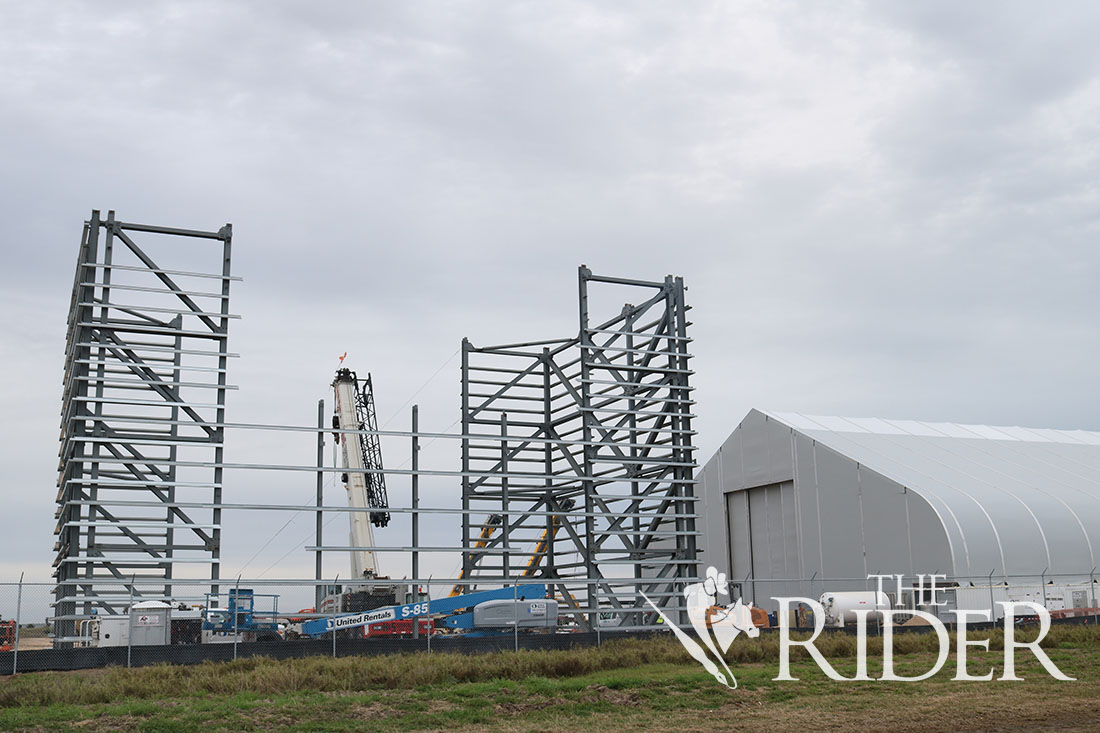
SpaceX crews are working on the finishing touches for Starship SN2 after the SN1 prototype exploded during a pressure test on the evening of Feb. 28 at the Boca Chica launch site.
Elon Musk, SpaceX CEO, redirected the focus by tweeting photos from the Boca Chica launch site showing the dome of the SN2.
“Sleeving SN2 dome in the high bay,” Musk said in a tweet March 3.
SpaceX aimed to launch SN1 on a test mission in the near future. However, due to the recent explosion, those plans have taken a backseat.
In December 2019, Musk publicly stated that he planned on having the prototype’s first flight take place in two to three months.
“Starship serves as a large, long-duration spacecraft capable of carrying passengers or cargo to Earth orbit, planetary destinations, and between destinations on Earth,” according to the SpaceX website.
An online video from NASA Spaceflight shows the prototype’s failure to launch with a large cloud of smoke and the SN1 itself buckling like a giant aluminum can.
Musk publicly acknowledged the setback on social media by tweeting an attachment of the launch failure at 2:32 a.m. March 2.
A Twitter user asked the SpaceX CEO what he and the crew learned from the experience, to which Musk replied, “There’s a puck at the base that takes the engine thrust load. Don’t shuck the puck!”
Another Twitter user asked Musk what the new target for static fire of SN2 is.
“We’re stripping SN2 to bare minimum to test the thrust puck to dome weld under pressure, first with water, then at cryo,” Musk replied. “Hopefully, ready to test in a few days.”
The Rider tried to contact Cameron County Judge Eddie Treviño Jr. for comment, but as of press time, he had not returned calls or replied to emails.
In other SpaceX news, the company hosted a job fair Feb. 6 at the UTRGV STARGATE building, located next to the SpaceX launch site.
Patrick Gonzales, associate vice president for University Marketing and Communications, said the facility is a public building and can be used by filing the proper request form.
“They rent that facility through our Facilities office,” Gonzales said. “All our facilities at UTRGV are public and can be used following the proper procedures.”
The collaboration between UTRGV and SpaceX is the development of STARGATE, which stands for Spacecraft Tracking and Astronomical Research into Gigahertz Astrophysical Transient Emission.
STARGATE has prompted the University of Texas System to make the Center for Advanced Radio Astronomy (CARA) the first research unit of UTRGV, according to its website.
“We are working with SpaceX,” Gonzales said. “There’s an opportunity for some of our students to participate or to help develop some of that technology. We are helping with that.”
Asked about the student opportunity, Teviet Creighton, an associate professor of physics and astronomy and director of CARA, replied that he could not disclose that information.
“Per university policy, we have no comment to make about any activities that SpaceX is conducting or not conducting at the STARGATE building,” he said. “So, I’ll just put that on the record.”
Creighton, however, spoke about CARA and the projects under it.
“STARGATE is a project within CARA that is exploring space technology commercialization,” Creighton said.
The main programs within CARA include the Arecibo Remote Command Center (ARCC), which is a student education research and leadership training program; STARGATE, which is a space technology commercialization program; Low Frequency All Sky Monitor (LoFASM), which is a low-frequency radio astronomy program; and, the Instrumentation Working Group, which focuses on laser instrumentation, according to Creighton.
Asked how many UTRGV students are involved with STARGATE, he replied, “Overall, we have roughly 10 undergraduates and four graduate students who are broadly working on this and STARGATE-related projects.”
Students from the Matamoros Institute of Technology also collaborate with STARGATE projects.
They specifically work on a project about classifying and categorizing Earth imagery from space and another project on developing alternative energy from the ocean. This energy is called “blue energy,” Creighton said.
He said about 20 students from the Matamoros institute are working with STARGATE.
“Those are the two groups that are working directly on STARGATE projects,” Creighton said.
Meanwhile, SpaceX continues to solicit applicants for jobs at the Boca Chica launch site as per its website:
— environmental health and safety
— finances, food services
— human resources and office support
— information technology and infrastructure design and support
— launch engineering
— launch technicians and trade skills
— manufacturing and production
— materials engineering
— non-destructive evaluation
— physical security
— supply chain management
— vehicle engineering-mechanical design and development
— vehicle engineering-thermal design and analysis
Students interested in applying for jobs at SpaceX may apply on the company’s website, https://www.spacex.com/careers/list.






